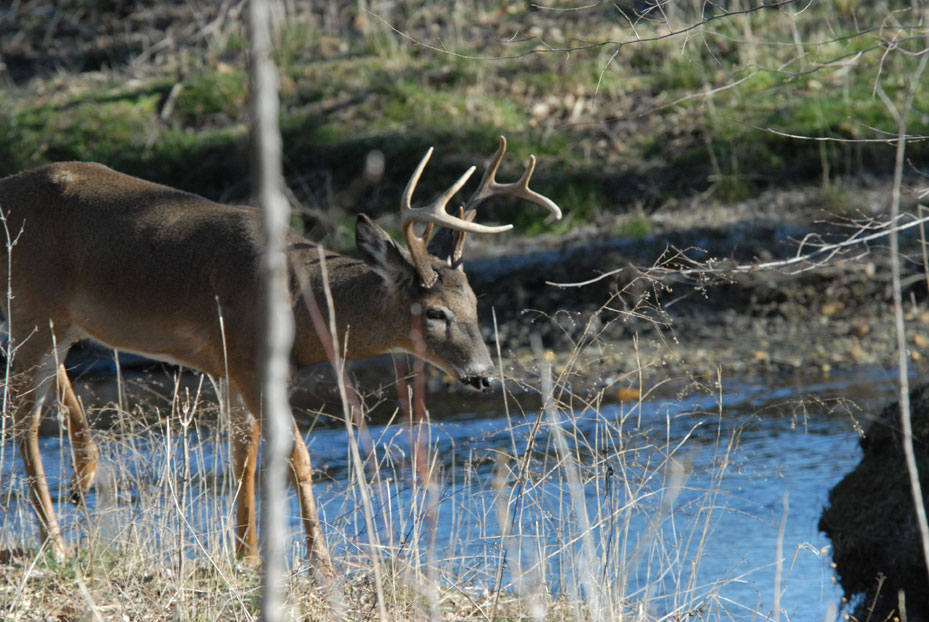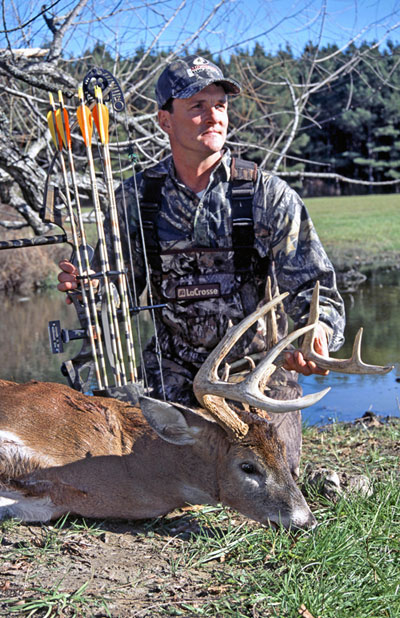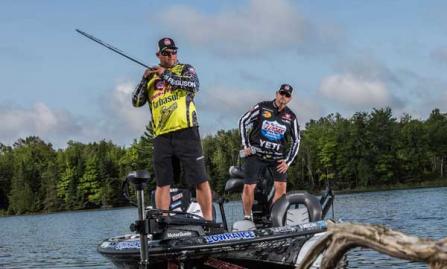Bob Walker | Mossy Oak ProStaff
Mossy Oak Pro Bob Walker of Livingston, Alabama, has been hunting deer for over 45 years. He’s been a deer guide for over 30 years, not only at Bent Creek Lodge in Jachin, Ala., but also for friends and family.

When we talk about preseason scouting for deer, we assume that everyone knows what the term preseason scouting means. However, that’s not necessarily true. Unless you know what to look for, where to look and why to look, you'll get very little information from scouting on how to find and take older-age-class bucks when deer season arrives.
Trail Cameras:
I'm often asked, “When should I put out my trail cameras?”
I start placing my trail cameras in June to try and determine what the buck-to-doe ratio is, how many bucks I have to hunt, and what the size and approximate ages of the bucks are that I want to take that season. I think trail cameras can be very important to preseason scouting; however, I don’t totally rely on them.
One big mistake that hunters often make is setting up their trail cameras near a feeder or where they’ve put out bait. However, I've learned that some older-age-class bucks are trail-camera shy. In some states, you can’t legally bait. If there is agriculture in your area, one of the most-productive places to put a trail camera is to set your trail cameras to photograph deer coming down well-established trails, leading into the crop fields where they feed.
I may wait as late as early September to start putting-out my trail cameras, because more than likely with deer season starting October 15 in my home state of Alabama, the deer that I photograph going to the crops probably still will be feeding in or near those crop fields at the first of bow season. I focus most of my trail-camera surveys on deer trails and not on feeders or bait.
Food Sources:
I believe the best way to scout before deer season is to get into the woods and look for the signs that will tell you what the deer are doing, and where they're doing it before the season. If you’ve had a dry summer and early fall, how much browse is left for the deer to eat? If you don’t locate much natural or native food for the deer, you need to plant a green field somewhere on your property and pray for rain.
I'll also be searching for water holes. If the creeks on your hunting property are wet-weather creeks that only flow when rain falls, you may want to walk those creeks and see if you can find a few pockets of water somewhere along those dry creek beds. Those types of areas often will be great spots to take a deer at the first of bow season or possibly the first of gun season.
 The tactics that I depend on the most is to take my binoculars and my hand-held GPS and go into the woods to look for oak trees. Once I find those trees, I use my binoculars to look for acorns on the trees to try and determine which trees have the most acorns and the biggest acorns. That will help you decide which trees’ acorns should fall first during early bow season. Certain oak trees drop their acorns earlier than other oak trees. If you don’t know which oak trees historically drop their acorns first in the region where you hunt, ask other hunters who live close to that land about the acorns, or call your local fish and game department and talk to the regional biologist, who should be able to give you that information.
The tactics that I depend on the most is to take my binoculars and my hand-held GPS and go into the woods to look for oak trees. Once I find those trees, I use my binoculars to look for acorns on the trees to try and determine which trees have the most acorns and the biggest acorns. That will help you decide which trees’ acorns should fall first during early bow season. Certain oak trees drop their acorns earlier than other oak trees. If you don’t know which oak trees historically drop their acorns first in the region where you hunt, ask other hunters who live close to that land about the acorns, or call your local fish and game department and talk to the regional biologist, who should be able to give you that information.
In our area, sawtooth oaks start dropping acorns somewhere between the last week of September and the first two weeks in October. The next tree to drop its acorns where I live and hunt is the overcup oaks. They're usually the first wild oak tree (trees that someone hasn’t planted) to drop their acorns. You can find overcup acorns around wet places where you hunt. Deer will feed on these acorns when they first start dropping, but they’ll usually leave the overcup acorns when other varieties of oaks begin dropping their nuts. The cap on the overcup acorn almost completely covers the acorn inside of it. So, this acorn is a little bit harder for the deer to eat than other acorns are. The water oak and pin oak acorns usually begin dropping after the overcup acorns.
One of the keys to early-season scouting is to remember that each oak tree is an individual and has its own set of habits as to when it drops its acorns and how many acorns it usually produces. For instance, I have a water oak tree near my house that always starts dropping acorns really early – generally at the end of the second week in October and before any other water oak trees drop their acorns. That tree always drops its acorns early, but not all the water oaks around my house start dropping their acorns at the same time this one tree does. What’s important to know about the water oak trees is that they usually drop their acorns after the overcup oaks drop their acorns. So when the deer leave the overcup oaks, they’ll often feed around the water oak trees.
The next tree in my area to drop its acorns is the swamp chestnut oak. On the first day of bow season in October, 2017, I was sitting in a stand with a friend of mine and his 10-year-old son – the 10-year-old’s first bowhunting deer trip. The deer would walk across a clover food plot to get to those swamp chestnut acorns. Every deer we saw close to the stand was going to that swamp chestnut tree to feed on the acorns. For some reason, the swamp chestnut oaks where I live only produce acorns every other year or very few acorns then. But every other year, this oak tree will drop loads of acorns.
One of the best ways to scout in the early season is when you find an oak tree that’s just beginning to drop its acorns, and mark that tree as a waypoint on your GPS receiver. Make a note as to what type oak tree it is, and what date that tree started dropping acorns. Every year you hunt that same property, you'll have a good idea of when certain oak trees begin dropping acorns. Then before the deer season opens each year, you can go to the trees that you’ve marked as waypoints, use your binoculars to look into the tree for acorns, and better tell when that tree probably will drop its acorns.
If you’re hunting an area that you don’t frequent, be sure to scout for landscape changes that could alter deer movement and food sources. Fallen or diseased trees could help or hurt your hunting.
I guide almost every day of deer season in the mornings and afternoons at Bent Creek Lodge. Each day we try to post photos of the deer and the hogs that our hunters take throughout deer season. If you're interested in hunting Alabama, check www.bentcreeklodge.com before you come to the state. Then you can get an idea at least of the size and types of animals that we’re taking.






























